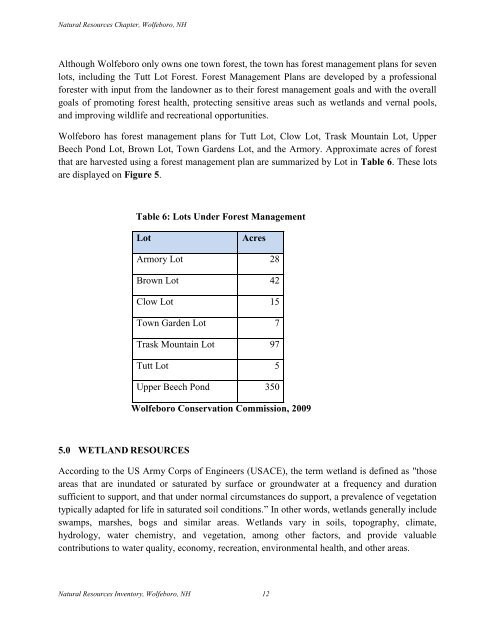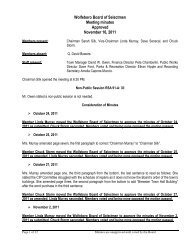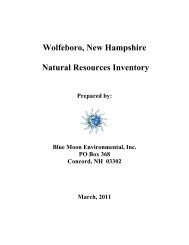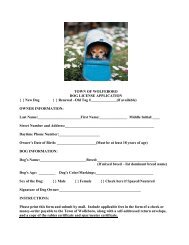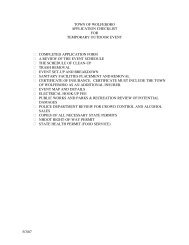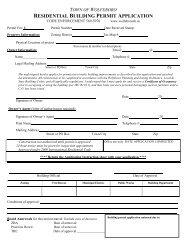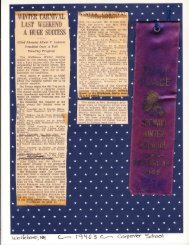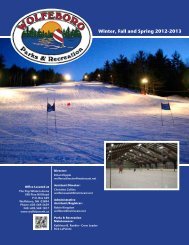Natural Resources Chapter of the Master Plan - Town of Wolfeboro
Natural Resources Chapter of the Master Plan - Town of Wolfeboro
Natural Resources Chapter of the Master Plan - Town of Wolfeboro
Create successful ePaper yourself
Turn your PDF publications into a flip-book with our unique Google optimized e-Paper software.
<strong>Natural</strong> <strong>Resources</strong> <strong>Chapter</strong>, <strong>Wolfeboro</strong>, NH<br />
Although <strong>Wolfeboro</strong> only owns one town forest, <strong>the</strong> town has forest management plans for seven<br />
lots, including <strong>the</strong> Tutt Lot Forest. Forest Management <strong>Plan</strong>s are developed by a pr<strong>of</strong>essional<br />
forester with input from <strong>the</strong> landowner as to <strong>the</strong>ir forest management goals and with <strong>the</strong> overall<br />
goals <strong>of</strong> promoting forest health, protecting sensitive areas such as wetlands and vernal pools,<br />
and improving wildlife and recreational opportunities.<br />
<strong>Wolfeboro</strong> has forest management plans for Tutt Lot, Clow Lot, Trask Mountain Lot, Upper<br />
Beech Pond Lot, Brown Lot, <strong>Town</strong> Gardens Lot, and <strong>the</strong> Armory. Approximate acres <strong>of</strong> forest<br />
that are harvested using a forest management plan are summarized by Lot in Table 6. These lots<br />
are displayed on Figure 5.<br />
Table 6: Lots Under Forest Management<br />
Lot<br />
Acres<br />
Armory Lot 28<br />
Brown Lot 42<br />
Clow Lot 15<br />
<strong>Town</strong> Garden Lot 7<br />
Trask Mountain Lot 97<br />
Tutt Lot 5<br />
Upper Beech Pond 350<br />
<strong>Wolfeboro</strong> Conservation Commission, 2009<br />
5.0 WETLAND RESOURCES<br />
According to <strong>the</strong> US Army Corps <strong>of</strong> Engineers (USACE), <strong>the</strong> term wetland is defined as "those<br />
areas that are inundated or saturated by surface or groundwater at a frequency and duration<br />
sufficient to support, and that under normal circumstances do support, a prevalence <strong>of</strong> vegetation<br />
typically adapted for life in saturated soil conditions.” In o<strong>the</strong>r words, wetlands generally include<br />
swamps, marshes, bogs and similar areas. Wetlands vary in soils, topography, climate,<br />
hydrology, water chemistry, and vegetation, among o<strong>the</strong>r factors, and provide valuable<br />
contributions to water quality, economy, recreation, environmental health, and o<strong>the</strong>r areas.<br />
<strong>Natural</strong> <strong>Resources</strong> Inventory, <strong>Wolfeboro</strong>, NH 12


